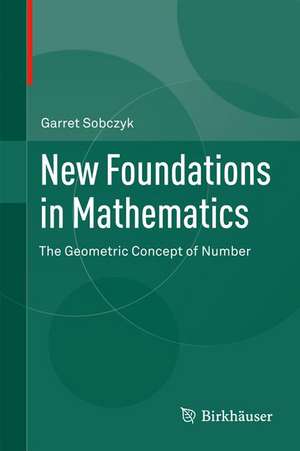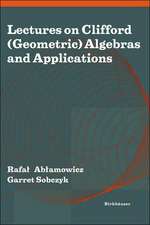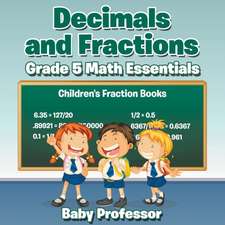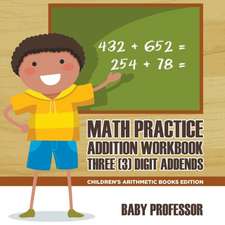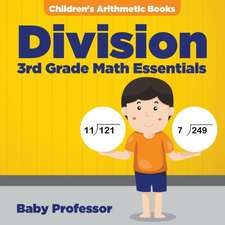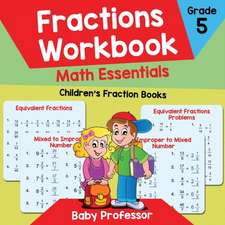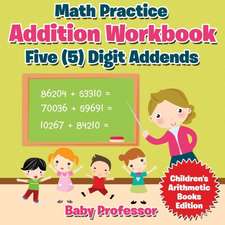New Foundations in Mathematics: The Geometric Concept of Number
Autor Garret Sobczyken Limba Engleză Hardback – 28 oct 2012
New Foundations in Mathematics will be of interest to undergraduate and graduate students of mathematics and physics who are looking for a unified treatment of many important geometric ideas arising in these subjects at all levels. The material can also serve as a supplemental textbook in some or all of the areas mentioned above and as a reference book for professionals who apply mathematics to engineering and computational areas of mathematics and physics.
Preț: 649.06 lei
Preț vechi: 763.60 lei
-15% Nou
Puncte Express: 974
Preț estimativ în valută:
124.21€ • 128.89$ • 103.82£
124.21€ • 128.89$ • 103.82£
Carte tipărită la comandă
Livrare economică 17-31 martie
Preluare comenzi: 021 569.72.76
Specificații
ISBN-13: 9780817683849
ISBN-10: 0817683844
Pagini: 370
Ilustrații: XIV, 370 p. 55 illus., 32 illus. in color.
Dimensiuni: 155 x 235 x 25 mm
Greutate: 0.66 kg
Ediția:2013
Editura: Birkhäuser Boston
Colecția Birkhäuser
Locul publicării:Boston, MA, United States
ISBN-10: 0817683844
Pagini: 370
Ilustrații: XIV, 370 p. 55 illus., 32 illus. in color.
Dimensiuni: 155 x 235 x 25 mm
Greutate: 0.66 kg
Ediția:2013
Editura: Birkhäuser Boston
Colecția Birkhäuser
Locul publicării:Boston, MA, United States
Public țintă
GraduateCuprins
1 Modular Number Systems.- 2 Complex and Hyperbolic Numbers.- 3 Geometric Algebra.- 4 Vector Spaces and Matrices.- 5 Outer Product and Determinants.- 6 Systems of Linear Equations.- 7 Linear Transformations on R^n.- 8 Structure of a Linear Operator.- 9 Linear and Bilinear Forms.- 10 Hermitian Inner Product Spaces.- 11 Geometry of Moving Planes.- 12 Representations of the Symmetric Group.- 13 Calculus on m-Surfaces.- 14 Differential Geometry of Curves.- 15 Differential Geometry of k-Surfaces.- 16 Mappings Between Surfaces.- 17 Non-Euclidean and Projective Geometries.- 18 Lie Groups and Lie Algebras.- References.- Symbols.
Recenzii
From the book reviews:
“This book is suitable for graduate students and researchers interested in learning how W. K. Clifford’s geometric algebras provide a common, geometrically well-interpreted algebraic language for linear algebra, vector calculus, linear operators, forms, relativity, symmetry, differential geometry, non-Euclidean and projective geometry as well as Lie algebras. Every section is followed by an appropriate set of exercises, deepening and consolidating the section’s content.” (Eckhard M. S. Hitzer, Mathematical Reviews, July, 2014)
“This book is suitable for graduate students and researchers interested in learning how W. K. Clifford’s geometric algebras provide a common, geometrically well-interpreted algebraic language for linear algebra, vector calculus, linear operators, forms, relativity, symmetry, differential geometry, non-Euclidean and projective geometry as well as Lie algebras. Every section is followed by an appropriate set of exercises, deepening and consolidating the section’s content.” (Eckhard M. S. Hitzer, Mathematical Reviews, July, 2014)
Textul de pe ultima copertă
The first book of its kind, New Foundations in Mathematics: The Geometric Concept of Number uses geometric algebra to present an innovative approach to elementary and advanced mathematics. Geometric algebra offers a simple and robust means of expressing a wide range of ideas in mathematics, physics, and engineering. In particular, geometric algebra extends the real number system to include the concept of direction, which underpins much of modern mathematics and physics. Much of the material presented has been developed from undergraduate courses taught by the author over the years in linear algebra, theory of numbers, advanced calculus and vector calculus, numerical analysis, modern abstract algebra, and differential geometry. The principal aim of this book is to present these ideas in a freshly coherent and accessible manner.
The book begins with a discussion of modular numbers (clock arithmetic) and modular polynomials. This leads to the idea of a spectral basis, the complex and hyperbolic numbers, and finally to geometric algebra, which lays the groundwork for the remainder of the text. Many topics are presented in a new
light, including:
* vector spaces and matrices;
* structure of linear operators and quadratic forms;
* Hermitian inner product spaces;
* geometry of moving planes;
* spacetime of special relativity;
* classical integration theorems;
* differential geometry of curves and smooth surfaces;
* projective geometry;
* Lie groups and Lie algebras.
Exercises with selected solutions are provided, and chapter summaries are included to reinforce concepts as they are covered. Links to relevant websites are often given, and supplementary material is available on the author’s website.
New Foundations in Mathematics will be ofinterest to undergraduate and graduate students of mathematics and physics who are looking for a unified treatment of many important geometric ideas arising in these subjects at all levels. The material can also serve as a supplemental textbook in some or all of the areas mentioned above and as a reference book for professionals who apply mathematics to engineering and computational areas of mathematics and physics.
The book begins with a discussion of modular numbers (clock arithmetic) and modular polynomials. This leads to the idea of a spectral basis, the complex and hyperbolic numbers, and finally to geometric algebra, which lays the groundwork for the remainder of the text. Many topics are presented in a new
light, including:
* vector spaces and matrices;
* structure of linear operators and quadratic forms;
* Hermitian inner product spaces;
* geometry of moving planes;
* spacetime of special relativity;
* classical integration theorems;
* differential geometry of curves and smooth surfaces;
* projective geometry;
* Lie groups and Lie algebras.
Exercises with selected solutions are provided, and chapter summaries are included to reinforce concepts as they are covered. Links to relevant websites are often given, and supplementary material is available on the author’s website.
New Foundations in Mathematics will be ofinterest to undergraduate and graduate students of mathematics and physics who are looking for a unified treatment of many important geometric ideas arising in these subjects at all levels. The material can also serve as a supplemental textbook in some or all of the areas mentioned above and as a reference book for professionals who apply mathematics to engineering and computational areas of mathematics and physics.
Caracteristici
Geometric algebra, the central topic of the book, provides a unique way to unify, streamline, and simplify teaching and applying many different areas of mathematics Presents and casts new light on an impressively broad range of math from elementary level Features many exercises and problems to enhance the reader's skills and understanding Topics and applications selected to encourage further, more specific research by both graduates and undergraduates Includes supplementary material: sn.pub/extras
